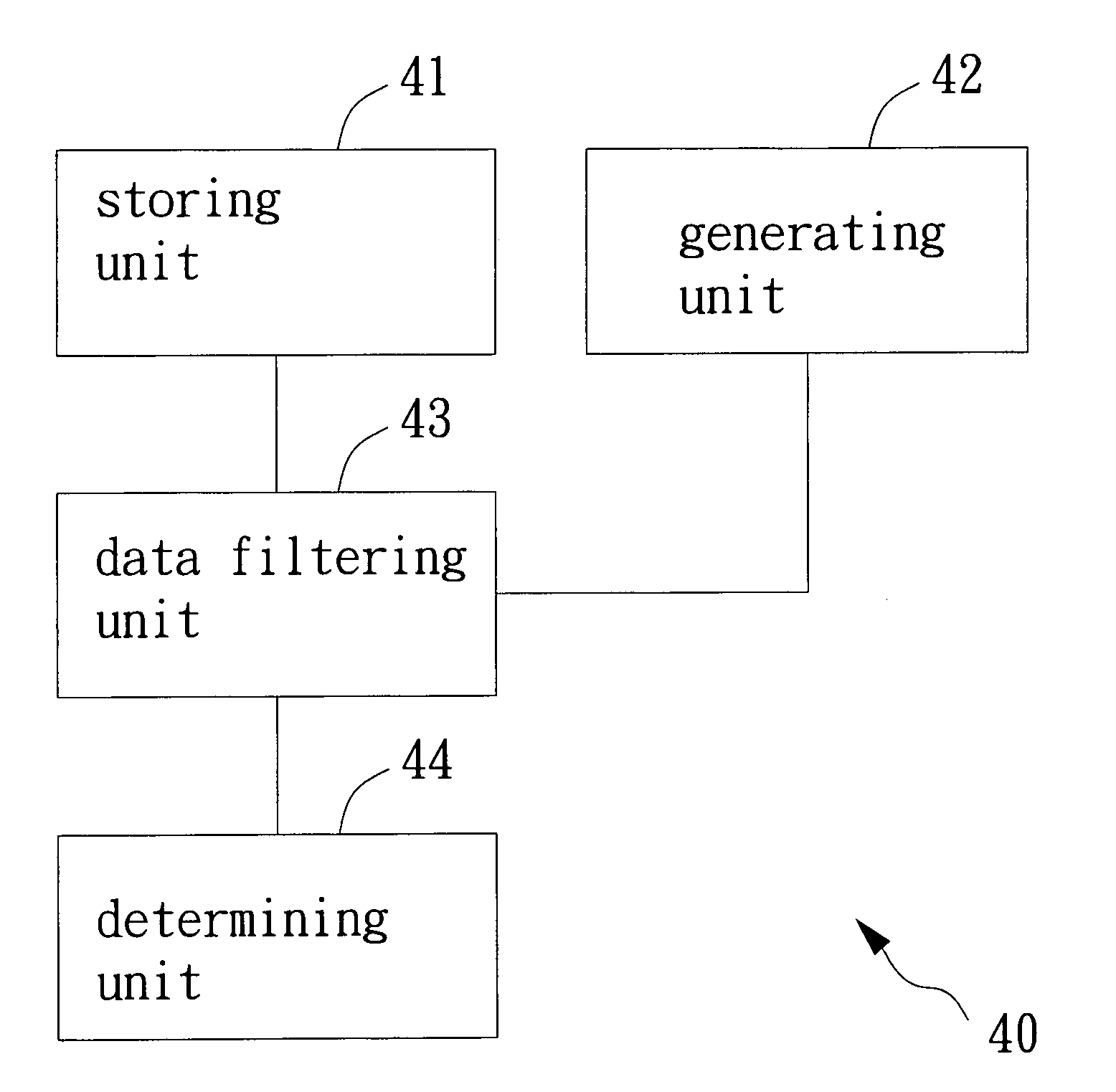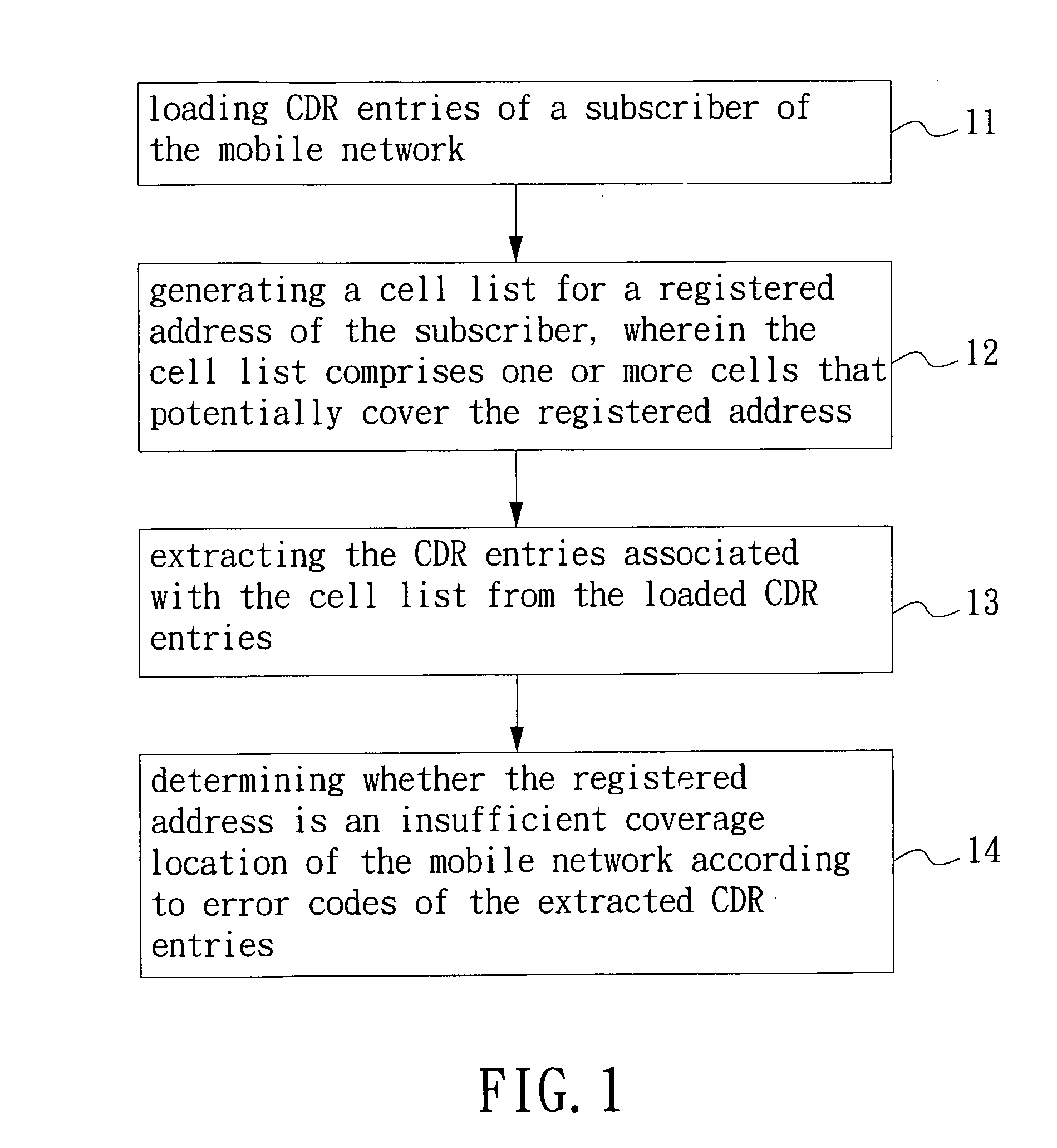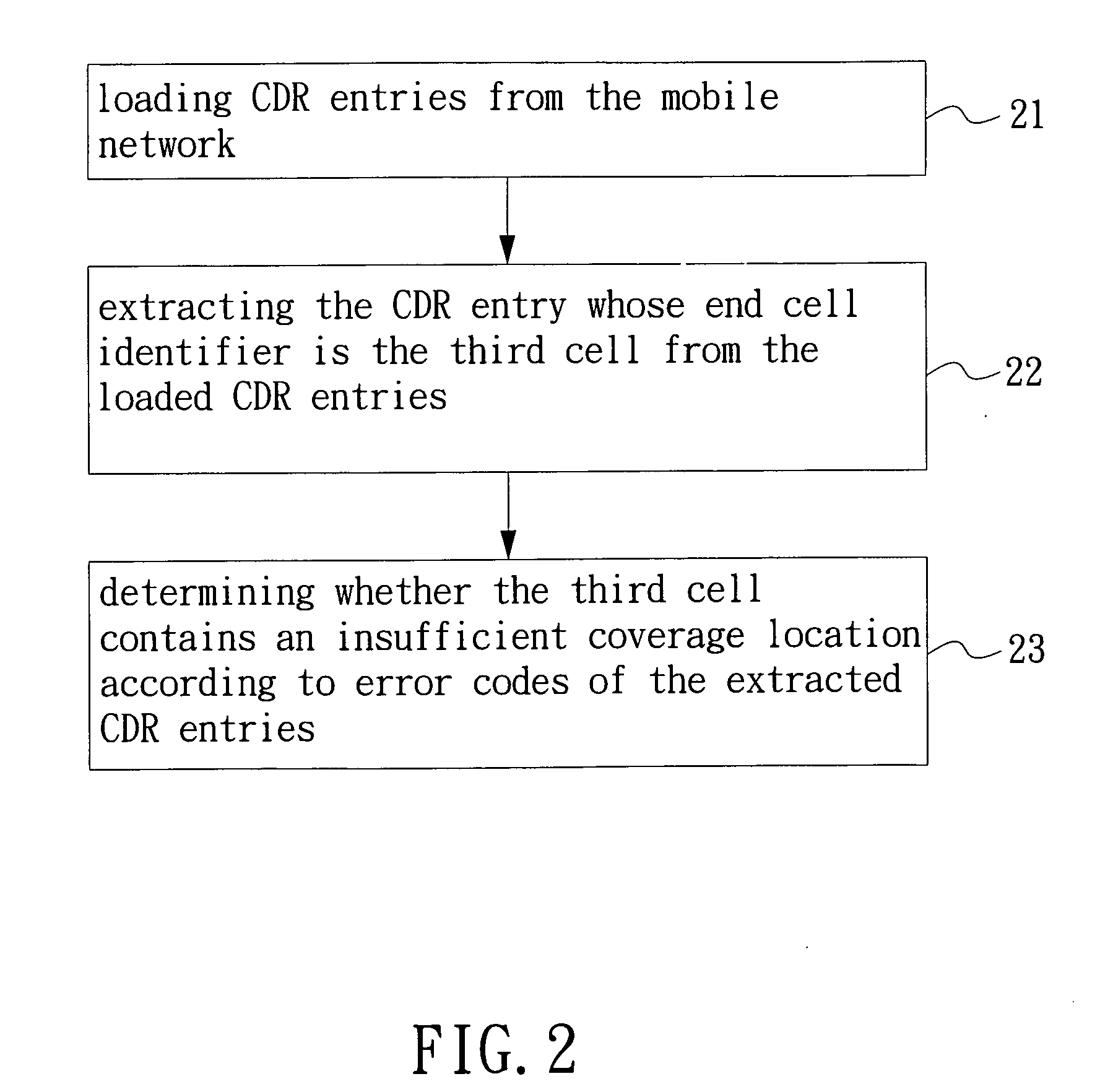Method and system for detecting insufficient coverage location in mobile network
- Summary
- Abstract
- Description
- Claims
- Application Information
AI Technical Summary
Benefits of technology
Problems solved by technology
Method used
Image
Examples
first embodiment
[0016]Next, the first embodiment is described in detail with respect to FIG. 1. In step 11, a plurality of CDR entries of a subscriber are loaded from the mobile network. In step 12, a cell list is generated for a registered address of the subscriber. The cell list comprises one or more cells that potentially cover the registered address. The cell list can be generated by looking up the coverage map of the mobile network, which displays the coverage area of each cell on a map. The registered address can be represented in terms of latitude and longitude by referring to Geographical Information System (GIS). If floor information is available in the registered address, the registered address can be represented more precisely in terms of latitude, longitude and altitude.
[0017]In step 13, the CDR entries associated with the cell list are extracted from the CDR entries loaded in step 11. Each of the extracted CDR entries comprises the end cell identifier belonging to the cell list.
[0018]I...
second embodiment
[0030]Next, the second embodiment is described in detail with respect to FIG. 2. In step 21, a plurality of CDR entries are loaded from the mobile network. In step 22, any CDR entry whose end cell identifier is a certain cell (denoted as the third cell below) is extracted from the CDR entries loaded in step 21. In step 23, it is determined whether the third cell contains an insufficient coverage location according to the error codes of the CDR entries extracted in step 22. More specifically, a ratio is first computed by dividing the number of the extracted CDR entries whose error code is coverage-related by the total number of the extracted CDR entries. Then, if the ratio is higher than a second threshold, it means that a call maintained by the third cell is very probable to be terminated due to a coverage issue, that is, the third cell can be determined to contain the insufficient coverage location. Furthermore, the higher the ratio is, the more serious the insufficient coverage lo...
third embodiment
[0036]In the third embodiment, if the mobile network is a hybrid network implemented based on multiple radio access technologies (RAT), then the statistic data about Inter-RAT handover can be used for detecting the insufficient coverage location. For instance, network operators who are rolling out a network built based on a new RAT (such as UMTS, CDMA 2000, EVDO, LTE, WiMAX, etc.) on top of their existing network (such as GSM, cdmaOne, PHS, etc.) usually allow the handover from the new network to the existing network to make up the poor coverage of newly rolled out network. Therefore, handover counters for recording this kind of Inter-RAT handovers can be used to enhance the detection of the insufficient coverage location in this situation. For example, UMTS to GSM handovers are usually available in a GSM / UMTS co-existing network to ensure that calls can be continued or can be made if users travel to areas with poor UMTS network coverage, and corresponding Inter-RAT handover counter...
PUM
 Login to View More
Login to View More Abstract
Description
Claims
Application Information
 Login to View More
Login to View More - R&D
- Intellectual Property
- Life Sciences
- Materials
- Tech Scout
- Unparalleled Data Quality
- Higher Quality Content
- 60% Fewer Hallucinations
Browse by: Latest US Patents, China's latest patents, Technical Efficacy Thesaurus, Application Domain, Technology Topic, Popular Technical Reports.
© 2025 PatSnap. All rights reserved.Legal|Privacy policy|Modern Slavery Act Transparency Statement|Sitemap|About US| Contact US: help@patsnap.com



